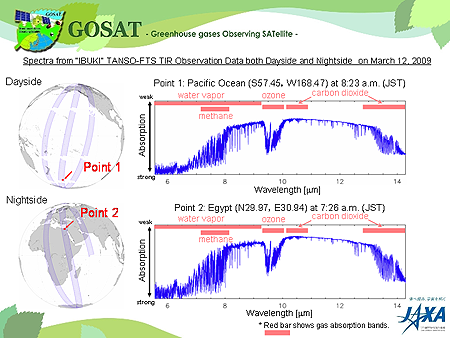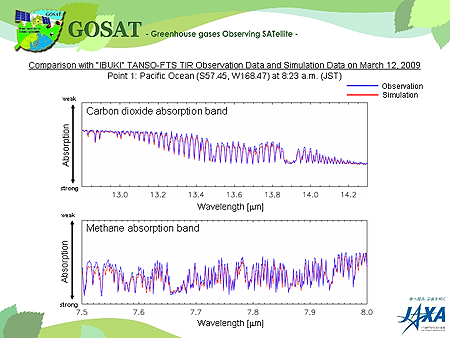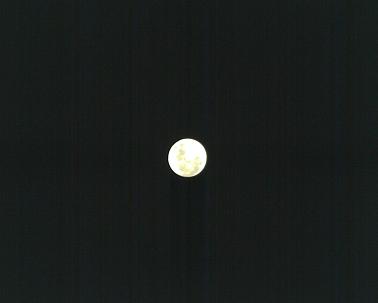Seen from Space 2009
| Greenhouse Gases Observing Satellite "IBUKI" (GOSAT) " First Thermal infrared spectra" Acquired by Onboard Sensors |
|
The Japan Aerospace Exploration Agency (JAXA) successfully acquired the "First Thermal Infrared (TIR) spectra" using the Greenhouse Gases Observing Satellite "IBUKI" (GOSAT) during its initial functional check. The data were acquired by sensors on board IBUKI, including the Thermal And Near infrared Sensor for carbon Observation-Fourier Transform Spectrometer (TANSO-FTS) after the functional check of detector cooler. which had recently been completed. IBUKI was launched by JAXA at 12:54 p.m. on January 23, 2009, (Japan Standard Time, JST) from the Tanegashima Space Center. Its initial functional check is on schedule, and the satellite is in good condition. Figure 1 and 2 present the observation results achieved by the TANSO FTS thermal infrared band (Band 4) when IBUKI passed over the southern Pacific Ocean at around 7:30 a.m. and Egypt around 8:20 a.m. on March 12, 2009 (JST). We confirmed the TANSO-FTS worked normally in all observation bands and verified the successful results of TANSO-FTS shortwave infrared (SWIR) Bands 1, 2 and 3 on February 7. We will continue to carry out the initial functional check, which is scheduled to be completed three months after IBUKI’s launch. JAXA, the National Institute for Environmental Studies (NIES), and the Ministry of the Environment (MOE) will then cooperatively carry out the initial calibration and validation including comparing IBUKI data and the ground data, confirming the data accuracy, and making compensations based on the data.
We will evaluate the accuracy of relative intensity of each spectrum during calibration activities by comparison with the data measured by instruments on the ground. (*) The simulation data was calculated by the radiative transfer model (LBLRTM), using sea-surface temperature from NOAA, and temperature and water vapor profiles from Grid Point Value of the Japan Meteorological Agency. Figure 3 presents an image of the Moon acquired by IBUKI’s monitor camera when the Moon calibration functional test was performed by pointing the satellite towards the moon.
|







